
Experience vs. youth is one way to view the contest between John McCain and Barack Obama, and how they differ becomes clear when weighing these two presidential contenders' views and potential impact on workplace safety and health. Very few votes or sponsored bills exist to tell us where Obama stands on safety, health, and environmental issues, but this is not true of McCain, who was first elected to the Senate in 1986.
If you want it done, involve safety. As anyone in the safety profession knows, we are super-busy and constantly asked to take on new responsibilities. Why? Because we work through any obstacles and get the job done! Safety folks are organized, focused, overworked, and get our jobs done with less than enough financial backing. We are creative team players.
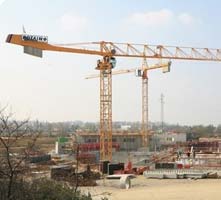
An average of 22 construction workers died in crane-related incidents per year from 1992 to 2006, according to a report released June 17 by the Center for Construction Research and Training (CPWR), which derived the number from BLS data. The "Crane-Related Deaths in Construction and Recommendations for Their Prevention" report, spurred by tower crane collapses in New York City and Miami that killed 10 workers and one bystander this spring, listed eight recommendations. Certification of operators, inspectors, riggers, and signalpersons are the top three.

Budgeting is easily one of the worst tasks we safety professionals have to do. Without the assistance of a crystal ball or a Ouija board, we are trying to forecast the future needs and crises of our staff from a safety point of view. We want our budget to be realistic, manageable, and taken seriously by our corporate managers while accomplishing needed goals.

Safety videos have long been popular with trainers, and several companies continue to produce high-quality videos on a wide range of topics. With the popularity of YouTube and greater bandwidth available to millions of Americans, the era of free online videos has arrived -- a tsunami of junk, genius, coarse humor, celebrity and wannabe embarrassment, spin, advertising, and even quality.

Managing a safety program can be a struggle on the good days. All too often, managers and supervisors want to ensure the program is known as "your safety program" rather than the company's or department's safety program. That "hands off" approach will cause many elements of the goals and initiatives to stall quickly, and it sets up a method for blame to begin when things fall by the wayside.
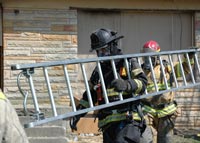
2007 was a tough year for American firefighters, and not only because nine South Carolina comrades died while fighting a fire in June. Preliminary data from the U.S. Fire Administration shows there were 115 on-duty firefighter deaths in the United States during the year, up from 106 the previous year. Although slightly down from 51 percent of the total in 2006 to 47 percent in 2007, heart attacks and strokes continued to be the leading cause, with 54 deaths.

It is a plain fact of the safety profession: Run the program, or it will run you (often, into the ground). Safety is critical to the success of any organization, and keeping everything moving takes a lot of work and thought and a little luck.

Recent studies show non-hospital-based workers have relatively high exposure rates to bloodborne pathogens. Vonachen Services Inc., a janitorial services contracting company with about 125 employees working in health care facilities, has built its BBP success through hands-on supervision and a strong training program.
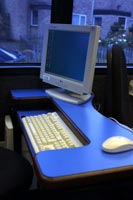
An earnings conference call and webcast Feb. 12 gave investors in NeuroMetrix Inc. (Waltham, Mass.) an update on the company’s continuing efforts to overcome reimbursement challenges facing its NC-stat nerve conduction testing device, which is used by thousands of doctors to diagnose Carpal Tunnel Syndrome cases. Our special report includes an interview with a Florida hand surgeon who uses the device and advice for optimizing computer workstations by 3M Workspace Solutions consultant and Certified Professional Ergonomist Thomas J. Albin.
The company behind a hand-held, FDA 510(k)-cleared automated nerve conduction testing device that is used by thousands of U.S. doctors to diagnose Carpal Tunnel Syndrome (CTS) is still trying to prove its value to insurers. NeuroMetrix Inc. of Waltham, Mass., said last October that about 5,500 physicians' offices and clinics use the NC-stat device in their practices, even as NeuroMetrix works to overcome reimbursement challenges.
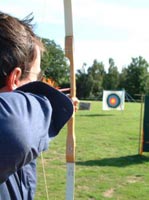
Admit it: All of us want a model safety program worthy of our talent, efforts, planning, and management ability. We begin each cycle, whether quarterly or annually, with a plump list of programs and specifics to create the perfect safe working environment. Then, the reality spheres of time, cooperation, and funding set a collision course with our goals, and before we realize it, time has flown by and we are no closer than before. So the question is; how do we accomplish our long-range goals for safety?

The ability to adapt the workplace to the size variation among computer workers is critical to both promoting users' comfort and protecting their health. While adjustable workstations are commonly thought of in terms of adjusting heights and depths to accommodate differences in sizes of users, it is also important to recognize the importance of adjusting computer workstations to accommodate differences in tasks.

With the hint of springtime comes a renewal of energy and a newfound determination to get ahead of all those safety job demands! We build and rebuild our "to do" lists and scrutinize each entry, trying to improve the great and bring up to compliance the not-so-great portions of our company's safety program. (Anyone who believes his program cannot be improved is sadly mistaken!)
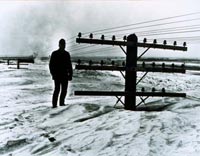
Ergonomic hazards can get dicey when conditions turn icy. Here's some advice.
Cold is relative. Just ask a spouse. The old joke about Floridians firing up their furnaces while, in the same weather, Minnesotans are out gardening in shorts and flip-flops is funny because it's grounded in truth. What is refreshing to one can be uncomfortable to another.

We see horrifying images everywhere: devastating ice storms, hurricanes, traffic pile-ups, crumbled buildings and sinkholes, mall shootings, and sometimes catastrophic workplace accidents. Are your workers really prepared to be safe? (And what about the looming threat of a widespread pandemic flu?) We are living in an instant-access, drive-by world these days. When we need a set of gloves, a first aid kit, a faceshield, or a respirator, we stop by the local hardware or big-box store and get it immediately, or we order online and await delivery within hours. Viewing icebound Oklahoma landscapes last month should have given us pause: What if there are long-term, serious power and traffic interruptions?

Ordinary Coffee Spilled On The Stairs Turned Them Into A Deathtrap! Those Stairs Were DEADLY WHEN WET. Starring Slick DeMise. Rated P for PERILOUS. Is this an ad for the latest direct-to-video horror movie? No, it's text from the front of a Safety Stuffer released by the Mechanical Contractors Association (MCA) of Chicago and United Association Local Union (LU) 597 -- small flyers dispersed with weekly paychecks to LU 597 workers employed by member contractors of MCA Chicago. The back of that particular safety flyer reveals the rest of the message: Please, clean up spills as soon as possible. Twenty-six different stuffers are being distributed, each conveying its safety message in the form of a scary movie ad that features eerie illustrations. The Safety Stuffers are sponsored by the LU 597/MCA Joint Safety Committee.

At least 20 million people, including 500,000 U.S. citizens, died in the 1918 influenza pandemic. Today, as many as 36,000 Americans continue to die each year of what's commonly known as the flu and more than 200,000 are hospitalized. Most outbreaks in North America occur between October and May. The peak season is usually late December to early March.

As I See It
CHANGES are commonplace in the safety profession. We are daily faced with constantly changing and improving technology in our profession-- how quickly we seem to have moved from Stone Age to Star Trek technology in recordkeeping and data storage! Occupational standards are generally in place, with needed updates coming in the future.
As I See It
Thoughts from OH&S Technical Editor Linda J. Sherrard, MS, CSP